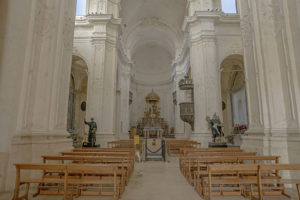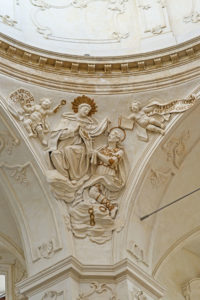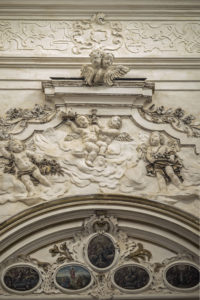The plan of the church of San Domenico is expressed through the synthesis of the longitudinal and central typology, according to a slightly elongated
Greek cross
layout.
 This type of space is difficult to find in Sicilian churches before this time. The large central area formed by the intersection of the axes houses the dome located at the second arcade, which is inserted on four pillars in the shape of a cross.
This type of space is difficult to find in Sicilian churches before this time. The large central area formed by the intersection of the axes houses the dome located at the second arcade, which is inserted on four pillars in the shape of a cross.
These are bevelled laterally to create an irregular octagon that supports the dome.
The interior is divided into three naves and other liturgical rooms are joined around the central space inscribed in the dome. In this work of architecture we find the compositional theme of the niche at the entrance which opens directly onto the central nave, juxtaposed with the square-shaped presbyterial area. The diagonal spaces created are lit by an autonomous model from above;
Gagliardi
inserted a secondary structure of columns and arches on which the five richly
frescoed
domes are placed.

